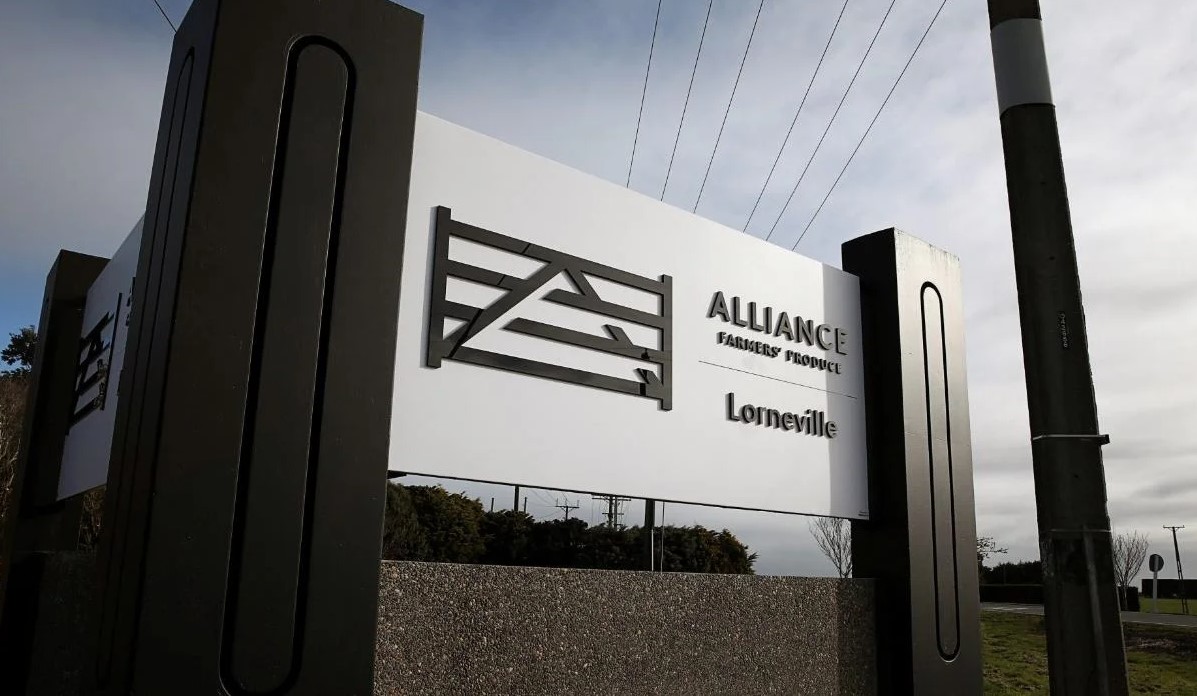
Alliance chairman Mark Wynne told me this week the cooperative is determined to deliver on its commitment to keep its shareholders fully informed on its performance and prospects as it faces up to the challenge of satisfying its banking syndicate.
Wynne and chief executive Willie Wiese have just completed a series of four webinars with shareholders when they updated them on results for the half year and progress with the capital raise being conducted by Craigs Investment Partners. While not being prepared to divulge exact figures for competitive reasons, he said the performance is in line with budget and is forecast to result in a profit at year end in September.
In the interests of transparency, he communicates by video every two months and provides a quarterly update using a traffic light system, as distinct from actual figures, to illustrate how the cooperative is performing against four benchmarks: operating profit, cash and liquidity, revenue and operational safety. For the first two quarters of the financial year, all four benchmarks are green, that is on or above target. In particular the cashflow is much better and plant safety, measured against livestock equivalent units and hours worked, has improved.
The cooperative’s management has applied a huge focus on getting back to basics, notably an improvement in the speed of information to farmers from the market. This process has been made easier by the marked improvement in market conditions during the current financial year. Prices for beef and also recently for lamb from all markets, notably the United States, EU, UK and even China, have been strong. This has enabled Alliance to improve its margins as well as paying its suppliers more for livestock.
The livestock flow has been much more consistent than the previous year in spite of unusual weather conditions, spring dry in Hawkes Bay and snow in Southland, followed by good conditions and grass growth.
Of course, none of this addresses the elephant in the room, the pressing need for new capital, although an improved financial performance makes it easier to convince prospective investors to put the money up.
Craigs have investigated all interested parties and a number of domestic and international investors are working through due diligence. Wynne anticipates being able to update shareholders on the potential options around the end of July.
He confirmed last year’s loss including the closure of Smithfield which accounted for $51 million had adversely affected the capital required to return the balance sheet to the required position. The initial amount sought was $160 million, but this has now increased to a minimum of $200 million which must be obtained by the end of the financial year at 30th September.
There are three alternative sources of capital:
- Farmers are willing to invest the total amount to retain full cooperative status, which is considered unlikely.
- Some kind of joint venture with an external party acquiring a percentage of the company, calculated on the basis of a valuation of the total business. This is possible, depending on the outcome of the capital raising process, and a potential model is the JV between Silver Fern Farms Cooperative and Bright Foods, previously Shanghai Maling.
- The farmer shareholders decide to accept an offer to buy the company outright which would almost certainly require a commitment to supply livestock for a specified period, although this would be difficult to enforce.
If none of these sources of capital eventuates, Wynne said it would be up to the banking syndicate to decide how to proceed. There are two possible scenarios for consideration, although for obvious reasons I did not ask him to speculate on what these might be, so they are entirely my own thoughts.
The first unlikely option is immediate closure which would inevitably crystallise the banks’ losses, including massive redundancy payments and asset write-downs, also making it impossible to sell any part of the business as a going concern.
The second more likely course of action would be to appoint a manager and agree a level of seasonal finance to enable the business to buy livestock and operate as a going concern while exploring potential buyers either for the whole business at a price the bank syndicate is willing to accept or, failing that, for individual plants or assets.
Alliance has been operating proudly as a farmer owned cooperative since its formation in 1948 and has fought its way out of potentially fatal financial difficulties before, notably after it had acquired the South Island assets of Waitaki International. That was because the banks were determined to impose a solution on the industry which would not involve them in massive write offs, while at the same time their machinations nearly sent AFFCO into receivership, after taking on Waitaki’s North Island plants.
This time the banks may need to take a more responsible approach to how they manage a difficult situation.
Current schedule and saleyard prices are available in the right-hand menu of the Rural section of this website.
Y Lamb
Select chart tabs
2 Comments
The existing Alliance plants are all needed to service the kill at its peak. On either side of that not so much. Both Alliance & SFFs (previously PPCS) have history of needing to raise capital and after that has been exhausted, by way of trading losses, then requiring to have another go. Alliance are now at that stage. Alliance and SFFs are about as old as each other. They have not ever been easy going competitors. At the end of the eighties the banks forced consolidation on the industry. That saw the departure of the remnants of Waitaki, Borthwicks and Challenge which AFFCO, Alliance and PPCS acquired. Given that history, the banks’ power to enforce at will, the long mooted integration come merger of Alliance/SFF may now too be a serious consideration. That is add #4 to the above.
Rustling up $200 million at the moment for a company that has made $200 mill then lost $200 mill would, I imagine, be rather challenging unless its an absolute bargain. Without a solid guarantee of stock supply it would be even harder.
Alongside many stretched sheep and beef farm balance sheets and land prices for a lot of land static, at best, or falling, its going to be an interesting watch for the next year or so how the banks navigate there way out of this one as Alliance is but one part of the equation.

We welcome your comments below. If you are not already registered, please register to comment.
Remember we welcome robust, respectful and insightful debate. We don't welcome abusive or defamatory comments and will de-register those repeatedly making such comments. Our current comment policy is here.